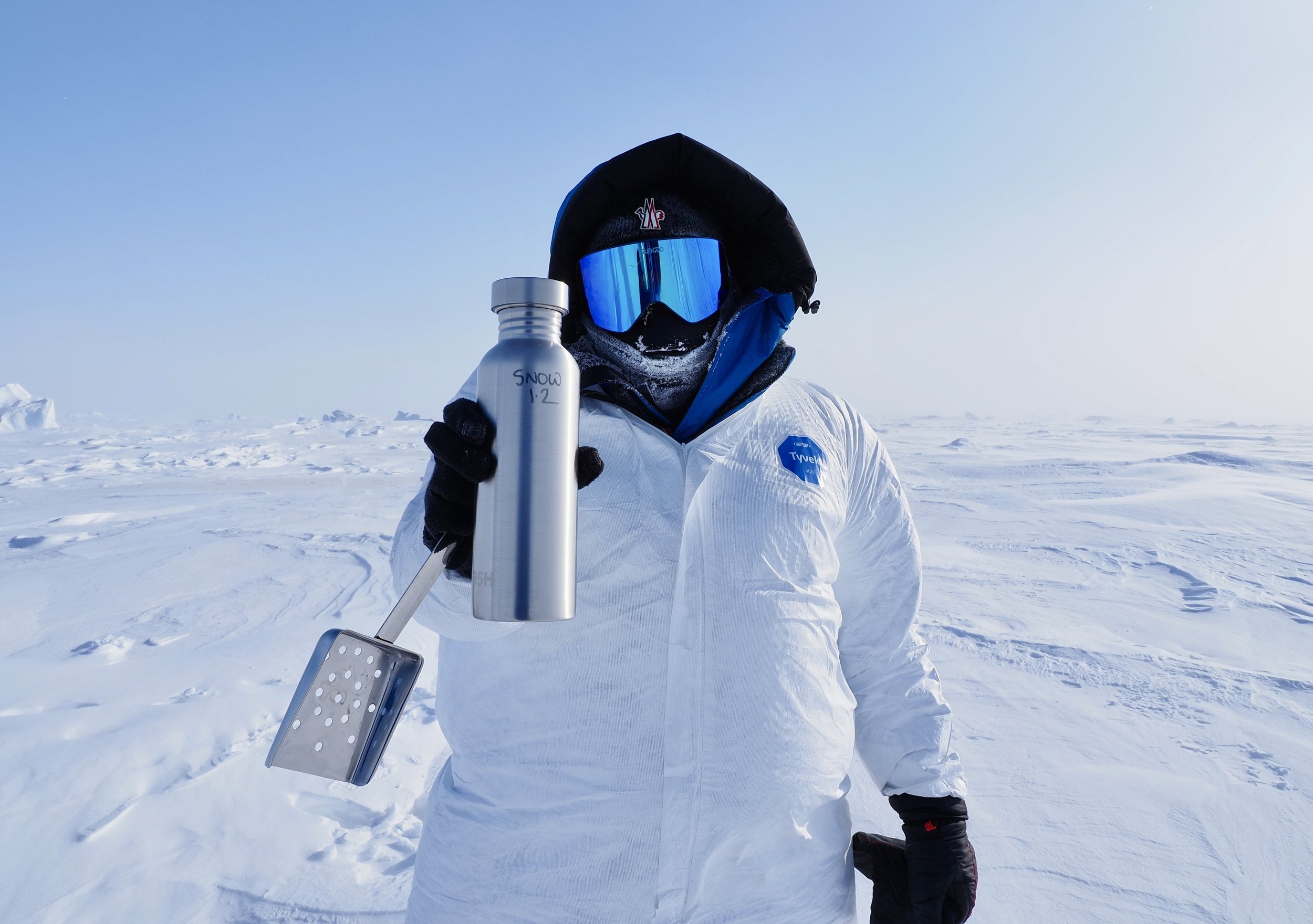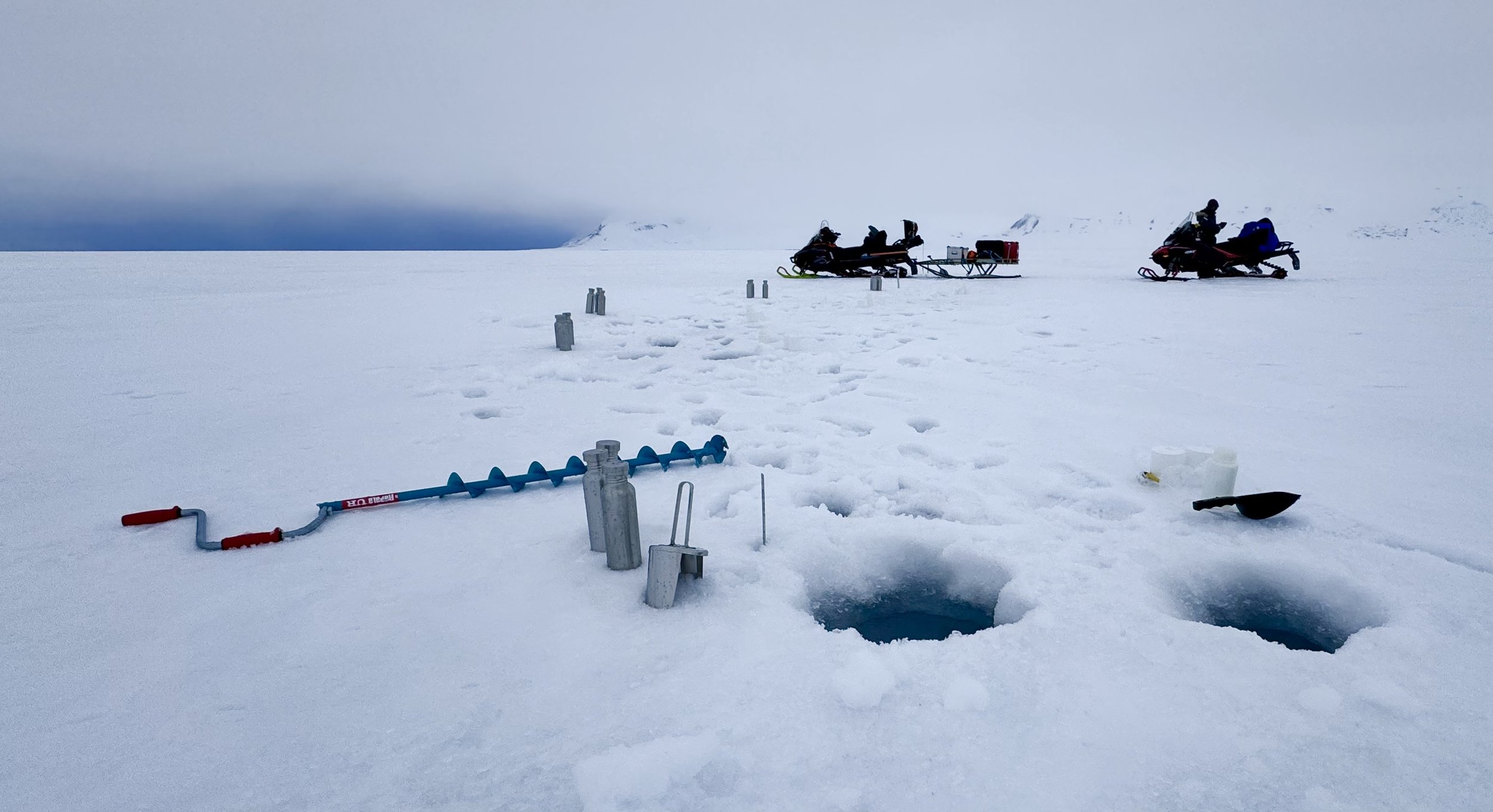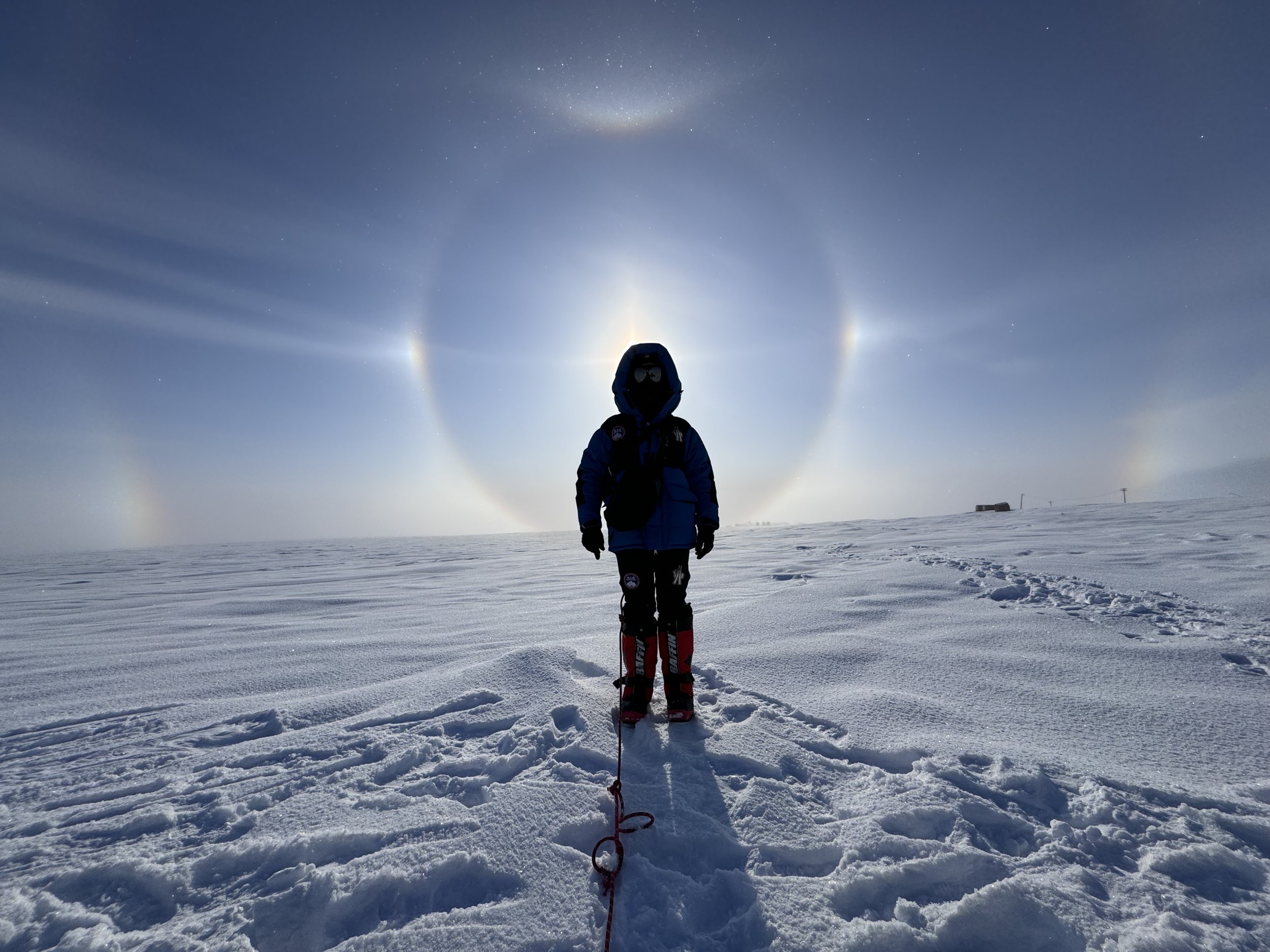A while back I had a wide-wandering chat with Shelby Stanger which has been crafted into a podcast for the REI series Wild Ideas Worth Living. If you’d like a listen you can find it here: pod.link/1183017174, on YouTube here: https://www.youtube.com/@rei or here: https://www.rei.com/.../skiing-solo-across-antarctica...
Where is Felicity right now...?
Feeling proud (if a little exhausted...)
Watching this 5-minute film by ROLEX about The 'Before It's Gone' Expedition left me a little emotional. It has been such a wonderful but relentless project that seeing it in its entirety as one story was a reminder of just what was achieved and how far we’ve come. It was a moment of pride.
Thanks to the team at Proudfoot for the care with the film, it looks amazing. Thanks to all the team members over the evolution of the project and particularly Julie who was responsible for the majority of the epic footage used in the film. Special thanks to my supervisors National Oceanography Centre and thank you to all the sponsors and supporters who have helped us in innumerable ways and especially those at Rolex for their unstinting faith in us.
at Buckingham Palace...
The MOST incredible evening at Buckingham Palace for the State Banquet…seeing masterpieces by Rembrandt and Titian on the walls, being presented to the King, having my dress complimented by Victoria Beckham (!), the most amazing food and wine, the sparkle of the Queen’s staggering tiara, a fabulous serenading of marching bagpipes, the kindness of fellow guests who made us feel so welcome and tottering down magnificent staircases on numb feet after standing too long in my best heels!
Thank you, thank you, thank you for the invitation - we are very touched to have been thought of x
The ONE Show!
For those of you in the UK and able to watch BBC iPlayer, here is the link to The One Show episode featuring The 'Before It's Gone' North Pole Expedition:
https://www.bbc.co.uk/iplayer/episodes/b007tcw7/the-one-show
Getting Arctic stories, expedition stories or science stories on mainstream prime-time TV is near impossible, so to get all three on The One Show is completely amazing - huge thanks to Barbara and Paul at Screenhouse who put the short film together. This has been years in the making and they championed it all the way x
Chairing Explore 2024
Very honoured to have been trusted with the role of host at this year’s Explore - the annual symposium of fieldwork and expeditions at the Royal Geographical Society in London.
I’ve been attending and benefitting from these weekends for twenty years, so I was very grateful for the opportunity to share some of what I have learned and help to encourage others on their journey towards making journeys with purpose.
So much fun, positivity and enthusiasm - it was the dose of inspiration I needed.
Putting the world to rights with Alex Honnold
Last month I had a very fun conversation with the wonderful Alex Honnold (he of the very scary free solo climb up the big cliff in Yosemite) as part of his ‘Planet Visionaries’ podcast series from ROLEX
We chatted about expeditions, personal challenge, science, the environment and a whole host of other things that were a bit of a surprise - funny where a conversation can take you!!
Have a listen using the link below:
Celebrating the launch of the Ranulph and Ginny Fiennes Award
Me, Sacha Dench and Gina Moseley - all past recipients of a Transglobe Expedition Trust grant
Attended the ‘Ran’s Globe’ event at the Royal Geographical Society (with IBG) which celebrated the launch of the Ranuloh and Ginny Fiennes Award as well as Sir Ranulph Fiennes’ 80th Birthday and the legacy of the Transglobe Expedition Trust.
Wonderful to hear stories from the Transglobe Expedition team as well as thoughts from Borge Ousland, Erling Kagge, Sacha Dent, Gina Moseley, Steve Jones and other legends.
Loved the screening of the original Transglobe documentary which has aged gloriously with Richard Burton as narrator sauntering around Covent Garden in flares and a cardigan sipping tea - magnificent!
With the whales...
There are many reasons NOT to live on an isolated island in the north west of Iceland but then, the reasons we LOVE living here are far greater…for instance, this moment, returning home with groceries and bumping into a group of more than twenty humpback whales who didn’t seem to care a jot that we had temporarily gatecrashed their cetacean convoy…
Circumnavigating Iceland
Two very different voyages around Iceland as a guest speaker for Go Hagan and Company - one with unnaturally flat seas, even as we crossed the Arctic Circle to the North, and one with more challenging conditions!
I’ve travelled a lot in Iceland but there are still many places I don’t know well or not at all. It was wonderful to have a chance to visit some of the coastal towns and get to know them a little better.
Bird Ringing
Very excited to be working with scientists from the University of Iceland and Náttúrustofa Suðurlands (South Iceland Nature Research Office) to establish three bird ringing projects on Vigur Island in northwest Iceland. It marks my personal introduction to the skill of bird ringing - applying small non-intrusive metal or plastic rings to the legs of seabirds so that information about their behaviour, interactions and movements can be monitored. So far we have focused on Eider ducks and puffins, with Black Guillemots to be added in July.
Applying the rings is just the start, however. The real value is in observing and recording observations of the ringed birds in the seasons to come. While the eider project relies on recapture of the ringed birds, the puffin and black guillemot projects intend to use the power of citizen science. For example, asking anyone who visits the island and photographs a puffin with a yellow band on its leg to share the image with us so that the observation can be recorded.
We really look forward to finding out what the projects will reveal about the lives of these most iconic seabirds.
On a quick trip to Svalbard...as a tourist!
….well, ok, not completely as a tourist - I did manage to spend a day getting out to Van Mijenfjorden where I have collected snow, ice and water samples with the B.I.G. Expedition in 2022 and 2023 to collect yet more samples for a third year in a row.
Conditions on Svalbard were especially slushy this year so huge thanks to Yann for getting me out to the fjord just in time!
Returned from Nunavut
On 7th April 2024 the B.I.G. Expedition team travelled to Nunavut and set out to traverse the Prince Gustav Adolf Sea by ski to collect snow, ice and water samples as well as an array of other data about this fast-changing environment.The Prince Gustav Adolf Sea is one of two areas within the Arctic Ocean where the oldest sea ice accumulates. Moved around by currents in the ocean and atmosphere, the oldest and thickest rafts of ice from across the Arctic eventually drift to this area in the north of the Canadian high Arctic islands.
In the event, bad weather and the consequent severe logistical delays forced a change of plan. The team were instead dropped by plane on Ellef Rignes Island on the eastern edge of the Prince Gustav Adolf Sea from where they battled yet more bad weather to access Arctic Ocean sea ice. They managed to complete the planned sample collection of snow and ice but within a more limited area than initially intended and almost entirely during just one 17-hour long session!
Ostensibly, the bad weather may seem to be simply bad luck - but on reflection, the team’s experience in Nunavut is one more demonstration of how climate has huge influence and impact on our ability to collect information about, and understand, the Arctic environment, particularly high latitude Arctic Ocean sea ice. Greater climate instability and extreme weather will only make efforts to plug these data gaps more challenging in the future and demonstrate the urgent need for efforts such as ours.
This is to be the last ski journey of what has become a four-year project to collect vital information about Arctic snow and ice. The B.I.G. team have now completed four ski expeditions (two in Iceland, one in Svalbard and one in Canada) and collected more than 200 samples as well as dozens of additional datapoints which will now be used in a range of research studies. The expeditions may be completed but the project will continue for quite some time as analysis of these samples is done, and results compiled.
On a very special shortlist...
Forming sea ice in the Arctic Ocean, Nunavut
Many thanks to those unknown who nominated me for this year’s Shacklton Medal for the protection of the Polar Regions. I’m very grateful for the efforts of me and my teams to be recognised in this way and especially to have been included within a short list that is so personally inspiring - what a group to be listed alongside!
The announcement couldn’t have come at a better moment as I reach the end of a bruising and difficult expedition journey. This fight is tough and encouragement like this that I might be moving in the right direction and doing some good means so much.
Use the link below for a brief video introducing all the wonderful short listed candidates. It feels good to know that there are so many out there turning the tide…
https://fb.watch/rJbh--ltpm/
Getting Interactive
This month I’ll be heading to Nunavut for the fourth and final ski journey of the B.I.G. (Before It’s Gone) Arctic Research Expedition. This time the aim is to get out onto proper Arctic Ocean pack ice to collect samples of snow, ice and water for black carbon, microplastic and heavy metal studies as well as data logging of Arctic Clouds, albedo, and snow depth. Team member Laura will be conducting work around psychology in extreme environments and we’ll also be reporting wildlife sightings.
Anthony at zerosixzero has once again created a fantastic interactive map for us which will display our progress as well as allow us to share voice blogs and images in real time. You can find the map on our website here: https://www.bignorthpole.com/track-expedition
Stepping out the pages of a Wilbur Smith book....!
Thanks for releasing my episode of this podcast series on International Women’s Day - and what an introduction…..no pressure then?!
“For the first episode of a new series of That Wilbur Smith Show, and in honour of International Women’s Day, Tom and Christopher talk to a real life hero who might have stepped out of the pages of a Wilbur Smith book, Felicity Aston, polar explorer and the first woman to ski across Antarctica alone!”
https://shows.acast.com/that-wilbur-smith-show
Antarctica
Very fortunate to have made two fantastic trips to Antarctica this season - one with my family and one with my oldest friend. So special to be able to share this most wonderful part of the world with my nearest and dearest. Thanks to Gohagan and Company for making us so welcome - and to everyone we shared these journeys with, it was a lot of fun!
Online
The Royal Geographical Society has commissioned a new podcast series all about expedition planning and fieldwork. I was delighted to take part in the episode focusing on expedition planning alongside Steve Jones and Nigel Winser, both of whom have generously provided plenty of valued advice to me over the years - I’m very grateful to both of them.
You can listen to this and all future episodes of the series here
More episodes will be released over the coming weeks and today I will be taking part in the recording of a future episode looking at ‘camp life’ on expeditions. Looking forward to it!
NYC
It’s nearly a decade since I was inducted as a Fellow to WINGS World Quest. I’m still just as proud to be welcomed among such an inspiring group of scientists and explorers and working with an organisation that champions diversity in all its guises in such a positive and impactful way.
Ulyana, Ayuka, Sadie and Felicity at the WINGS gala
This year was the first time since attending my first WINGS gala back in 2014 that I was able to arrange to be in NYC for the annual event. It was extra special that in 2023 the organisation was celebrating its 20th anniversary and 100th Flag Carrier - and more special still that one of those flag carriers receiving their flag at the gala was Dr Ulyana Horodyskyj who has been working with the B.I.G. Expedition as scientific advisor for the past few years!
I met up with Ulyana at The Explorers Club HQ, close to the Gala venue, beforehand and was delighted to recognise some of the names and faces displayed on the walls!
Celebrating 150th anniversary of the Challenger Expedition
I was delighted to be invited to help launch a new exhibition at the National Museum of the Royal Navy at Portsmouth Historic Dockyard last night. 'World Beneath the Waves' celebrates the Challenger Expedition of 1872–76 which is regarded as the birth of modern oceanography - but the exhibition also looks at modern ocean exploration as its legacy 150 years on - including displaying the first 'Boaty McBoat Face', the most famous ROV in the world!
The exhibition has been developed by the National Oceanography Centre British Antarctic Survey UK Antarctic Heritage Trust and HMS Protector but particular congratulations to Diana Davis and team for such a great job.
Inside Passage, Alaska
Wonderful to return to Alaska to make a journey by ship from Vancouver to Hubbards Glacier and back. Enjoyed plenty of wildlife sightings and as well as whales, sealions, eagles, bears and sea otters (a favourite), the stand-out encounter for me was sailing through a large area of sunfish. I’d seen these giants at a distance in Scotland before but not this many or so close - it was wonderful!




















